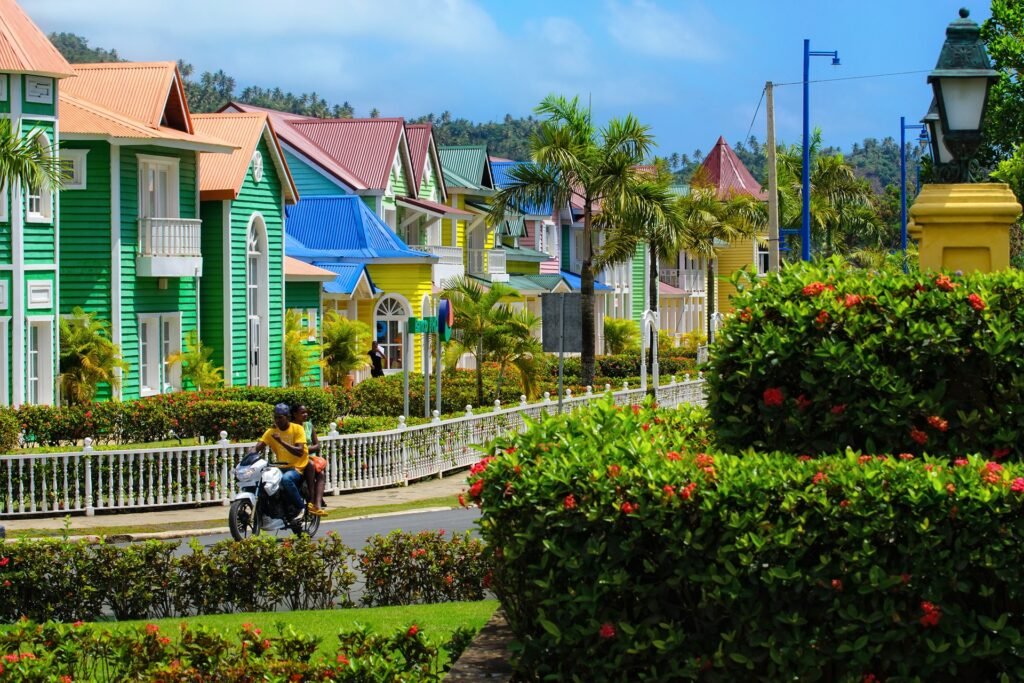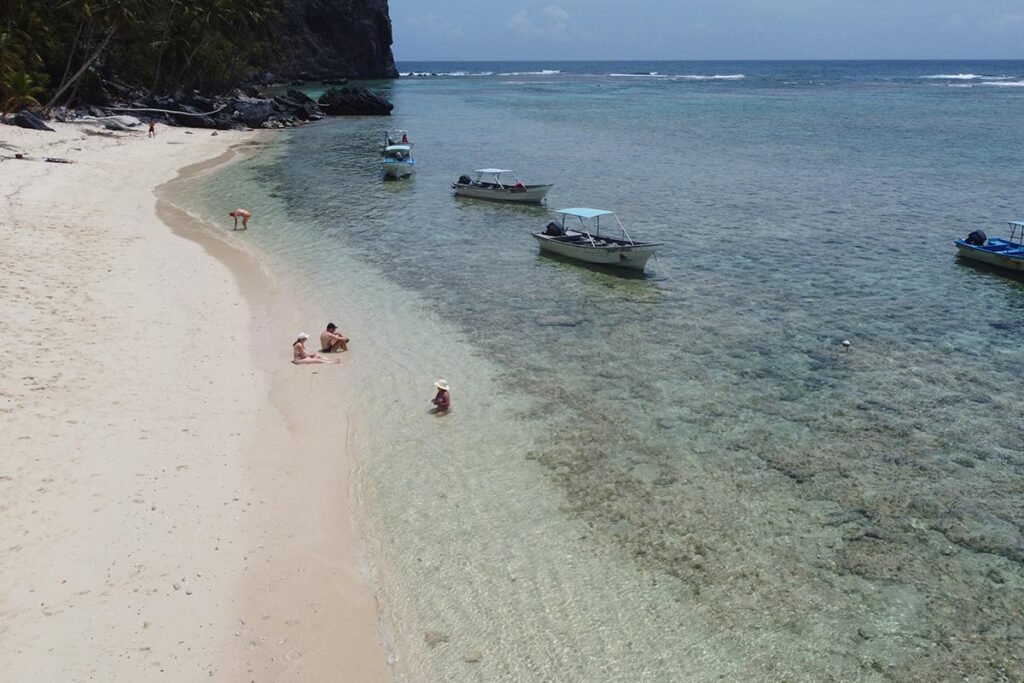Wet season in the Dominican Republic
Wet season in the Dominican Republic


A Lush Transformation.
The Dominican Republic, located on the island of Hispaniola in the Caribbean, is renowned for its stunning landscapes, vibrant culture, and warm climate. However, as the wet season approaches, the already picturesque scenery undergoes a remarkable transformation. From May to November, this period is often marked by rainfall, humidity, and the flourishing of nature, creating an enchanting atmosphere that captivates both locals and visitors alike.
In this article, we will examine the particularities of the Dominican Republic’s weather, analyzing the characteristics of its seasons and providing essential tips for optimal vacation planning. From the warm summer breezes to the cooler, drier conditions of winter, each season presents its unique charm in this region of the Caribbean.
Best time to visit the Dominican Republic?
Determining the best months to visit the Dominican Republic depends largely on what you are looking for in your vacation. If your idea of a perfect vacation includes enjoying the sun and tropical heat, then the months of June through October are ideal. Although these months are designated as the wet season, it does not mean that there is no sun; this period is still part of summer. During this period, temperatures hover around 30 degrees Celsius, creating the perfect environment for relaxing on the beaches and participating in a variety of water activities.
However, it is important to note that these months also coincide with the rainy season in the region. Although the rains are often brief and typically do not significantly affect travel plans, it is something to consider when planning your itinerary. On the other hand, if you prefer drier weather and slightly cooler temperatures, the months of December through April are ideal. This time of year is ideal for exploring the island, as it features less intense heat and a reduced chance of rain.
For those interested in avoiding the high season and looking for a quieter experience, the months of May and November can be an excellent option. During these months, destinations such as Punta Cana and Bayahibe tend to be less crowded, allowing you to enjoy their natural beauty and tourist attractions more leisurely.
What does the summer season look like in the DOMINICAN Republic?
Summer in the Dominican Republic is characterized by warm temperatures and high humidity. The average temperature ranges from 75°F (24°C) in the cooler mornings to 90°F (32°C) during the day. Coastal areas, such as Punta Cana and Santo Domingo, benefit from refreshing sea breezes, while the inland regions can feel significantly hotter. This season also falls within the Atlantic hurricane season, which officially runs from June 1 to November 30. Although hurricanes are not guaranteed, it is wise for residents and visitors to stay informed about weather patterns and potential storms.
Despite the occasional rain, summer is typically marked by sunny days, making it an ideal time for beach activities and outdoor exploration. Rainfall tends to be brief and localized, often occurring in the late afternoon or evening, allowing travelers to enjoy the majority of the day under the sun. The lush landscapes and diverse ecosystems flourish during this period, presenting a stunning backdrop for any summer adventure
Best summer activities in the Dominican Republic.
Summer in Punta Cana is regarded as an optimal period to engage in a variety of activities and excursions that capitalize on the warm weather and picturesque beaches. A selection of such activities will facilitate a comprehensive enjoyment of one’s stay in this Caribbean paradise. Furthermore, it is recommended that visitors consider engaging in water sports, exploring local culture, and partaking in culinary experiences to enrich their understanding of the region.
Snorkeling and diving in Catalina Island and Catalina Island is renowned for its crystal-clear waters and rich coral reefs, creating an ideal environment for both beginners and experienced divers. Throughout the summer months, divers can encounter a diverse array of marine life, including vibrant fish species and intricate coral formations.
Similarly, Punta Cana boasts a flourishing underwater world characterized by its abundant marine biodiversity. Summer is particularly favorable for snorkeling, as the warm waters provide excellent visibility, allowing divers to observe various species of fish and other marine organisms.
Visiting Saona Island is a destination that appeals to all senses, inviting visitors to appreciate the beauty of nature and the richness of culture. Therefore, anyone planning a trip to the Dominican Republic should prioritize Saona Island on their itinerary. Not only will they create unforgettable memories, but they will also return home with a greater understanding of the world around them. For these reasons, I firmly believe that visiting Saona Island is a must-do experience for all travelers.
Visiting Bacardi Island, the surrounding waters are teeming with marine life, including vibrant coral reefs, colorful fish species, and even occasional sightings of dolphins and sea turtles. Birdwatchers will find delight in the variety of avian species that call the island home, from hummingbirds flitting among the flowers to pelicans diving for fish in the azure sea. This rich tapestry of life creates a delicate balance in the ecosystem, where each species contributes to the overall health of the environment.
Dune Buggy or ATV in Punta Cana Dune buggy experiences in Punta Cana offer an exhilarating adventure that enhances the tourism landscape of the region while providing economic and cultural benefits. The thrill of navigating through diverse terrains, the support for local economies, and the opportunities for cultural exchange all contribute to the value of this activity.
Ecological and Adventure Tours Ecological and adventure tours provide numerous options for nature enthusiasts, including activities such as hiking in national parks, exploring caves, and zip-lining through lush landscapes. These activities not only offer exhilarating experiences but also foster a distinct insight into the region’s rich biodiversity and ecological systems. Engaging with the natural environment through such tours can enhance awareness and appreciation of conservation efforts, as evidenced by studies highlighting the positive impacts of eco-tourism on biodiversity preservation. Ultimately, these adventures serve to educate individuals about their ecological surroundings while promoting sustainable tourism practices.
Participants can explore significant historical sites, such as the Colonial Zone in Santo Domingo, while gaining insights into the island’s heritage. Furthermore, one should not miss the opportunity to indulge in the local cuisine, be it in renowned restaurants or through street food tours. Authentic dishes like ‘sancocho’ and ‘mangu’ showcase the island’s diverse flavors, allowing visitors to experience the true essence of Dominican gastronomy.
Remember to always wear sunscreen, stay hydrated, and wear appropriate clothing for the weather.
